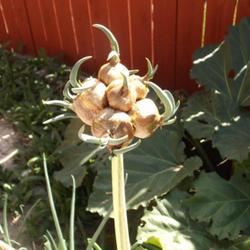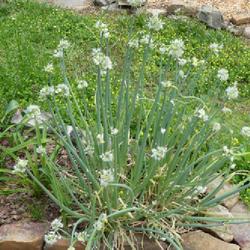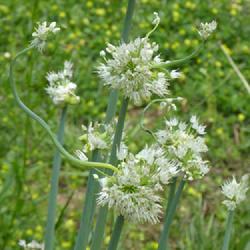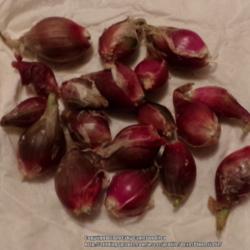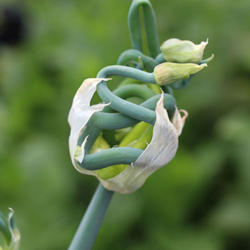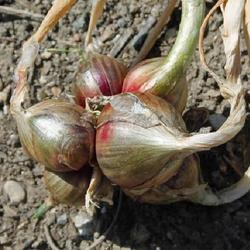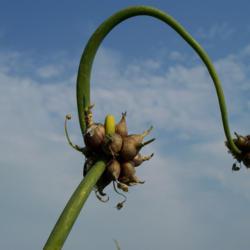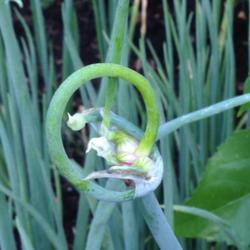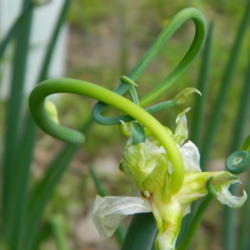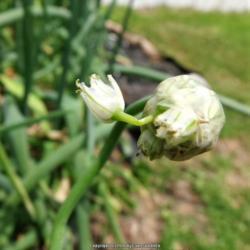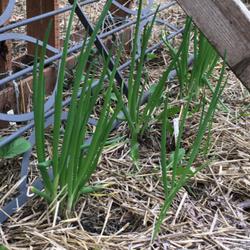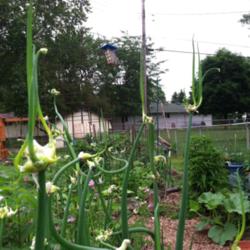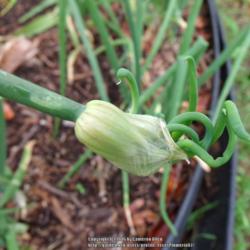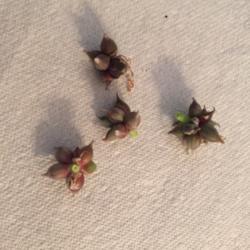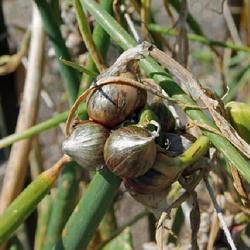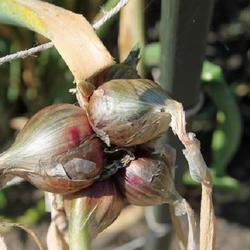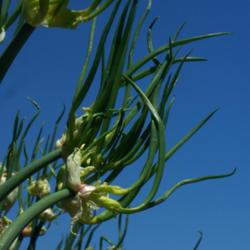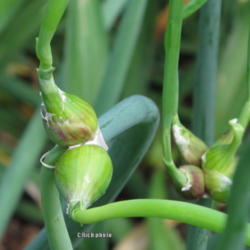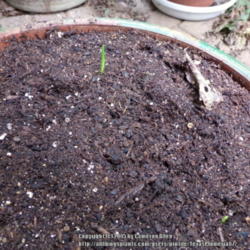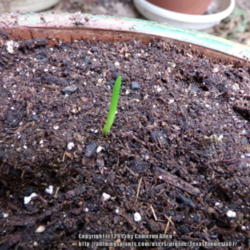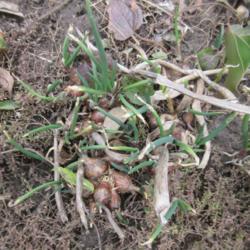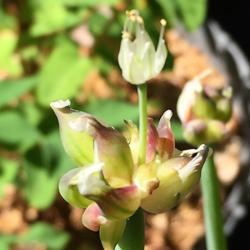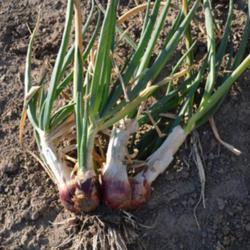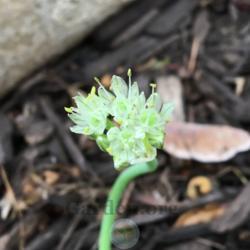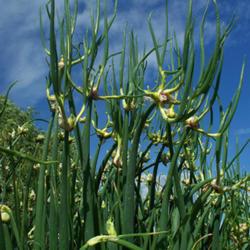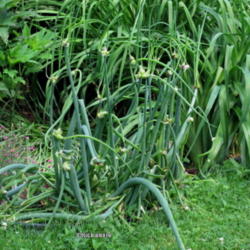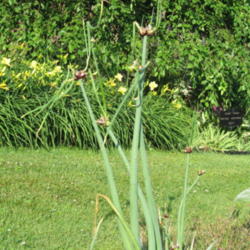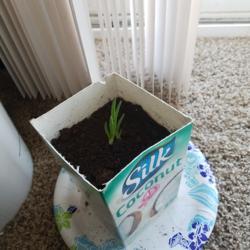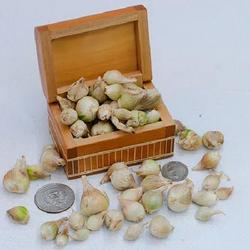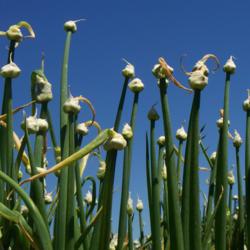Posted by
Cakeholemoon (Garfield, WA - Zone 6a) on Feb 20, 2018 8:49 PM concerning plant:
This is my favorite plant of all time! I have grown Egyptian Walking Onions for over 10 years. I love these plants so much that I started my own website about them and I sell them online. I grow Egyptian Walking Onions in several locations in eastern Washington in zone 6. They are beautiful to look at and wonderful to eat. I love to just gaze upon my plants because of their Medusa-like "heads" and their highly unique individuality. Every plant is different. Some plants may have only two big topsets, and others may have over 50 topsets! Some may have a ball of white flowers for a "head" and some may have a round cluster of topsets for a "head," perhaps with a twisting branch leading up to another cluster ball of topsets -- a "two-headed" onion plant! They surely make a great subject for the botanical photographer. The Egyptian Walking Onion plant is also very prolific (hence the Latin name Allium x proliferum). In the ground, one plant will divide into many over a few years and form a clump of onion bulbs. As clumps get bigger, the plants become more crowded, and the bulbs, though many, do not grow as large. The topsets tend to be smaller as well, and small white flowers dominate over topsets. Plant height also decreases with crowding. Dividing the bulbs every few years is a good idea for an overall increase in plant size both in the ground and above the ground. Above the ground, these plants grow wonderful little topsets which are basically miniature versions of the mature plant itself. The topsets typically form a cluster at the top of the plant, and when they become heavy enough, they will pull the plant stalk over and hit the ground. If the conditions are right, the topsets will take root where they touched down and grow new plants. This is how the Egyptian Walking Onion "walks" around your garden!
Posted by
SCButtercup (Simpsonville SC - Zone 7b) on Aug 24, 2014 3:51 AM concerning plant:
Its flowers turn into bulbils, which are like miniature onion bulbs. The weight of the bulbils causes the flower stem to lean over. Wherever it touches the ground, it roots and produces a new plant. This is how the onion "walks" and expands itself. Cut a few leaves to use in cooking as green onions (I do this later in the spring when it begins to flower so that I won't cut off the precious flower stalks by accident). Also, in late summer pull up and harvest the bulbs, but leave some bulbs and bulbils in place so that the onion patch will come back next year. Give some bulbils to friends to share the fun.
Posted by
farmerdill (Augusta Georgia - Zone 8a) on Feb 28, 2015 7:55 PM concerning plant:
This is the standard among topsetting onions. The plant is perennial, and a patch of them will grow in the wild for years. The topsets make nice pearl onions and are quite flavorful in soups. Both the plant and the small bottom bulb are quite pungent. For those who like pungency, these are very useful as spring onions or scallions.
Posted by
Cyclaminist (Minneapolis, Minnesota - Zone 5a) on May 25, 2016 6:10 PM concerning plant:
I've grown these for years. They multiply quickly, and they easily survive the winter. Even the bulblets can handle sitting on the ground and being exposed to freezing temperatures and sun.
I typically use the older plants in the spring as green onions. They are good sautéed and then added to an omelette. Later in the season, the leaves and flower stems get too tough to eat. I leave a few plants in each clump, and they split each year, and even grow if they are surrounded by quackgrass.
